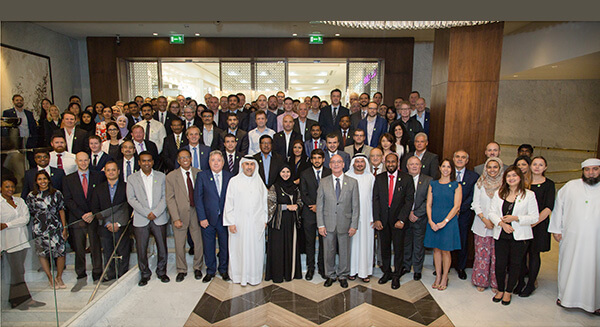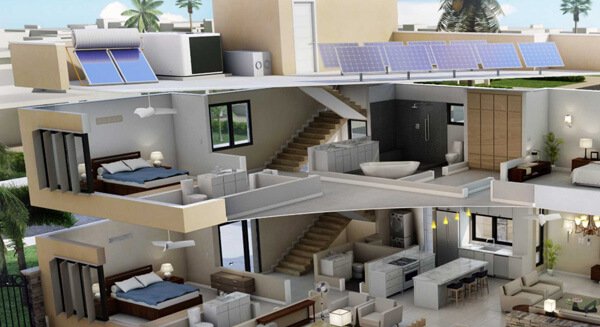Circular Economy
A Special contribution by Faisal Rashid, Sr. Director Demand Side Management, Dubai Supreme Council of Energy
–
Globally, we are facing the pressures of climate change, population growth and limited resources. The bio economy is part of a larger, holistic concept: the circular economy, which aims to transform the way we live so that we do not exceed our planet’s boundaries. There is only one planet that we live in, but in the next 20 years, the world will consume triple amount of resources vs what we consume today. Global commodity consumption of goods and materials extracted from surface of the earth such as water, concrete, asphalt, steel, metal, aluminium, glass, plastic and more is perhaps expected to triple in the next 20 years, on top of that, annual waste generation going to landfill, incinerator and perhaps ocean is projected to increase heavily in the next 2 decades . Considering that, the world today needs a sustainable economic model that reflects our social values and benefits the planet, nations and especially cities. In a global nutshell, cities consume 70% of energy use, it is responsible for 70% of carbon emission and it represents 80% of global GDP while more than half of global population lives in cities. So it is no doubt that cities are main source of adverse environmental footprint. Cities are essential, think of all the infrastructure we require like buildings, roads, bridges electricity, sewage and factories, think of the materials we are using to build and to grow cities like water, concrete, asphalt, sands, aluminium, metals, glass, plastic etc. Over the next 40 years; the world is expected to build 230 Billion M2 of new construction equivalent to building new Paris every week. So, the scale is simply massive, In other words, what we need is a circular economy, circular closed loop economy generally means keeping resources and assets in usage for as long as possible, get the maximum value from them while in use, then recover and regenerate products and materials at the end of each service life. Also means decoupling growth from use of limited resources and moving towards using less resource to provide the same product while keeping its worth, a system where we employ principles of narrowing, slowing and closing resources loop means use sustainable raw materials to produce goods, reducing waste that we generate, repairing things instead of throwing them and recycling used materials; This whole investment aspect of CE will certainly pay off into the economy model in the long run. Another pillar of the circular economy concept is growing fast: the new “service economy,” where sharing and leasing replaces ownership and consumers become users. For example, the shift from individual ownership to car sharing will lead to more intense usage over the car’s service life, requiring new, highly durable and recyclable materials and technologies.Given the ecological concerns of the world’s current model, it is clear that what we have in place today predominantly is not a circular economy, it is indeed linear one, we can easily say that the majority of business model being run or operated today by the linear economy; the idea of take, make and waste model, taking raw materials, converting raw materials into products and bio waste end up going into landfill or ocean or incinerator. This model has served our world for a long time but it is not sustainable in the long run and many nations, states cities and businesses started taking serious step toward adopting circular economy model. There is an ample evidence that circularity has started to make outbreak and gain ground on the linear economy and that it has moved beyond the proof of concept, a number of businesses are already thriving on it. Innovative products and contracts designed for the circular economy are already available in a variety of forms. Demonstrably, these examples have in common that they have focused on enhancing the total system performance rather than that of a single component; Enhancing the way we procure/select our materials and products, the way we conduct our work services, the way we operate/ maintain our assets, the way we handle our whole supply chain, the way we manage our waste and so on. I believe that Non Circular Economy or what we call linear economy is a function of the past. Businesses large or small, cities and countries should start making gradual shift towards a circular model and set up 2030 and 2050 appropriate targets for themselves. Achieving climate neutrality by 2050 and decoupling economic growth from resource use, the world needs to initiate the respective roadmap while ensuring the long-term economic competitiveness of the business model. To fulfil this ambition and accelerate the transition we need to give back to the planet more than what we take. In circular economy, you can’t change one element and leaving the other, it is a system change or transformation change, it is about building whole industrial cluster including financial aspect, policy framework, market development, capacity building, innovation platform, community engagement& buy in, green jobs growth, block chain aspect, artificial intelligent development, digital economy form, incentive scheme for businesses, behavioural change and private entities involvement, all these multiple levers have to work together in communal way to deliver the desired result. Transforming from the linear economy to circular one is not easy task, by all means, such a radical change entails a major transformation of our current production and consumption patterns, which in turn will have a significant impact on the economy, the environment and society. In summary, understanding these impacts is highly crucial for scientists, scholars as well as for policy-makers engaged in designing future policies for the Circular Economy.
![]()





 Become a Member
Become a Member

